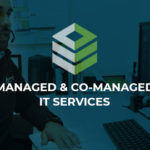3 Disaster Recovery Myths, Debunked
 With advancements in cloud computing, disaster recovery (DR) has become more efficient and affordable than ever. However, many business owners still cling to some DR myths that can safely be disregarded, such as these three.
With advancements in cloud computing, disaster recovery (DR) has become more efficient and affordable than ever. However, many business owners still cling to some DR myths that can safely be disregarded, such as these three.
Myth 1: Tape backups are the best DR solution
Tape backups are physical objects that deteriorate over time. Try listening to a cassette tape from the ’90s. If you can get it to work at all, there’s probably a good chance that the sound is distorted by now. Similarly, your tape backups will start to fail over time. At first, only a few files may be affected, but you will gradually lose all of your data.
If you’ve moved on froom tapes, you may fondly (haha) remember the days of backing up every afternoon (or maybe even once a week) switching tapes, putting them in your bag, and taking them home with you. How much of a pain was (is) that? It is also a common practice to store another set of tape backups outside your premises to secure them in case a natural disaster befalls your office. However, if your storage spaces themselves are unsafe from natural disasters, this could pose a problem.
Unlike tape backups, cloud-based backups are safe from deterioration. They’re automated, they’re encrypted, and they are also stored in multiple secured locations that are protected from natural disasters, so your data backups are as safe as they can be.
Better quality, less time, more secure. Don’t you think cloud backups are the way to go?
Myth 2: The RTOs you want are too expensive
Essential to any DR plan are the recovery time objective (RTO), which is the ideal period when everything must be up and running again to avoid serious losses, and the recovery point objective (RPO). That refers to how often your data is backed up. Hourly? Daily? Weekly? . Before the cloud, a “swift” recovery time would take days and cost up to six figures, and hourly backups were just too much hassle.
Cloud and virtualization solutions have made this much faster and affordable than ever before. Most DR can back your data up hourly, if not more frequently, and if you ever need to recover data, most services can do so in less than a day.
Myth 3: Disaster recovery is for big businesses, not SMBs
Due to the astronomical costs previously associated with DR, only big businesses could afford backup and recovery solutions. Thanks to the cloud, however, these have become more affordable for small- and medium-sized businesses (SMBs). From dental offices to small retail operations, SMBs can now take advantage of the best DR solutions in the market. Advances in IT and the cloud have also eliminated the obstacles of complexity, costs, and insufficient IT resources.
We hope that by dispelling these myths, you’d be convinced to implement a disaster recovery plan (DRP) for your business. Thanks to improvements in data storage technologies, it is now more affordable and efficient to implement a DRP, in turn making it easier to ensure BC. If you’d like to learn how our DR solutions can safeguard your business, send us a message and we’ll fill you in.






